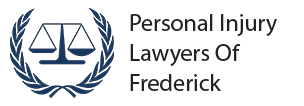Food delivery services have exploded in the United States in recent years. The growth of these services was already in full swing when suddenly coronavirus changed everything. Then, people switched from going to restaurants and grocery stores to using curbside services or food delivery services.
The biggest food delivery services are Uber Eats, DoorDash and GrubHub. Many restaurants have their own in-house delivery service, too. In addition, smaller food delivery services include Zomato, Swiggy, Slice, Postmates, Olo, and Caviar. There are also dedicated alcohol delivery services, such as Drizzly.
As with any increase in economic activity, the likelihood of a car or truck collision resulting in severe personal injuries, traumatic brain injury, or wrongful death increases. Who is liable when the driver for a food delivery service causes harm to a pedestrian or another driver?
Companies Are Held Liable
Fortunately, the rules for liability of food delivery persons were established in each state as state liability laws adjusted to the increase in crashes involving ride sharing companies, like Uber and Lyft. These companies initially took the position that each driver was an independent contractor and, therefore, had no liability for accidents caused by their driver. However, most states have concluded that this argument does not hold water. Uber and Lyft have been held liable as employers under the doctrine of respondeat superior or vicarious liability, just as any other employer is held liable for the negligent acts of its employee.
Holding gig employers accountable for harm caused by their drivers leads to increased vigilance when vetting new drivers. This safety practice is good for everyone. In addition, satellite monitoring of drivers’ activities can provide important evidence as to whether the driver was speeding. This technology promotes safer driving practices by employers who will be held liable if their driver causes severe injury to another. In addition, when a food delivery service is held liable for negligent driving by its driver — whether he or she is speeding, running a red light, distracted driving, or following too closely — resulting in personal injury or wrongful death, the company must obtain significant insurance limits to protect itself from financial responsibility. Again, this is good for everyone as more and more accidents are caused by food delivery drivers.
When Drivers Are Held Responsible
When does liability attach? If the food delivery driver is not actively engaged in a delivery, you will look to their private insurance for liability coverage when they cause an accident. For example, if the delivery driver is going to work or coming from work, they cannot be held in the course and scope of their employment, thereby making the food delivery service liable. Instead, you must look to their private insurance. In these circumstances if the private insurance is not adequate, an injured motorist can look to their own insurer for uninsured or underinsured motorists coverage to pay for medical expenses, lost wages, pain-and-suffering, or funeral and burial costs.
In order to determine employer/employee relationships and facts that might support holding a food delivery service liable for the negligent driving of one of its drivers, you should contact an experienced lawyer, like a catastrophic injury lawyer in Cleveland, OH from Mishkind Kulwicki Law Co, as soon as possible. Time limits may apply. Often, experienced attorneys will conduct an investigation for free as part of their initial consultation.


